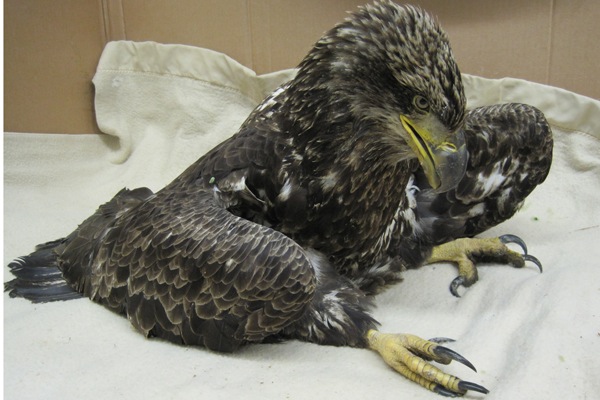
But eagles are dying.
Wildlife experts in Nova Scotia are finding sick and dying eagles and there is no secret to the cause. Eagles are being exposed to highly toxic lead by eating shotgun pellets or bullet fragments. The eagles ingest lead while scavenging animals like deer and moose that have been shot but not recovered by hunters.
Dangers of lead are well-known and lead has been eliminated in everything from paint to gasoline. One of the only sources of toxic lead left in our environment is from bullets. It’s not just affecting eagles, it’s poisoning our food. It is estimated that 20 million birds die worldwide each year from lead and that in the United Staes alone 3,000 tons of toxic lead are left in gut piles and unclaimed kills.
Helene Van Doninck, a veterinarian and co-founder of the Cobequid Wildlife Rehabilitation Centre sees the effect first-hand. “It’s getting to the point now that when I receive an eagle that can’t fly and it has no visible signs of injury, I’m immediately suspicious that it’s lead poisoning. Sadly, I’m often correct.”
Unama’ki Institute of Natural Resources and the Moose Working Group are hosting an information session with Van Doninck on how lead bullets are affecting eagles and our health, and looks at ways that hunters can help eliminate the risk of poisoning. She will be joined by Mi’kmaq hunter Kerry Prosper. The session will be held at Wagmatcook Culture and Heritage Centre in Wagmatcook on Thursday, June 14 from 10am–12pm. Admission is free.

